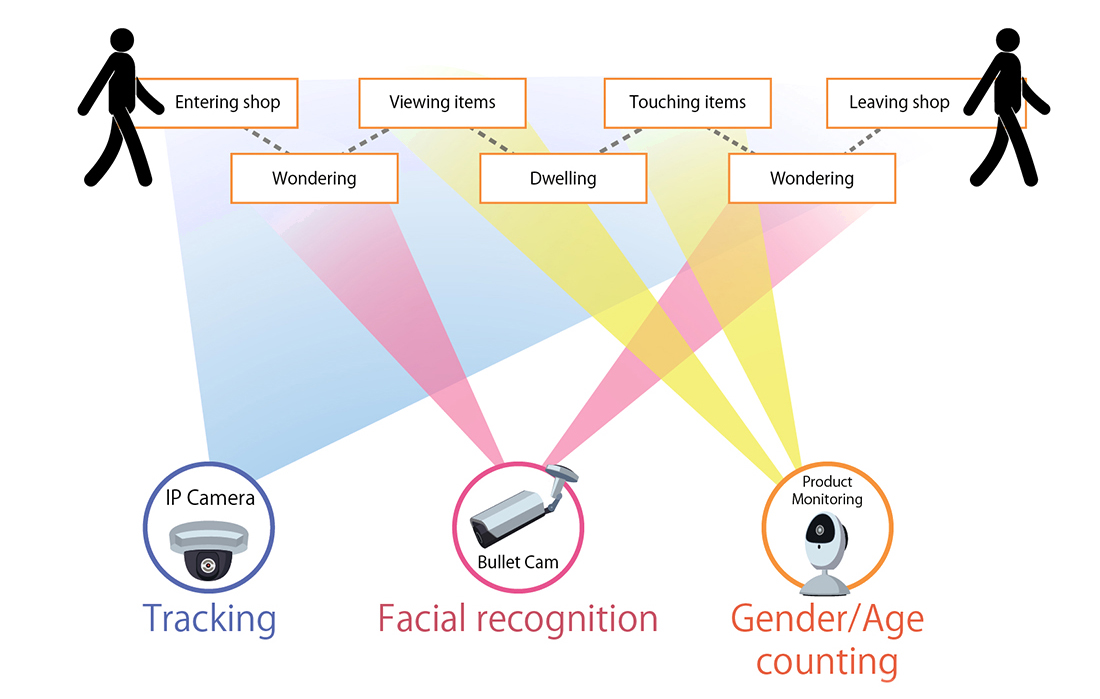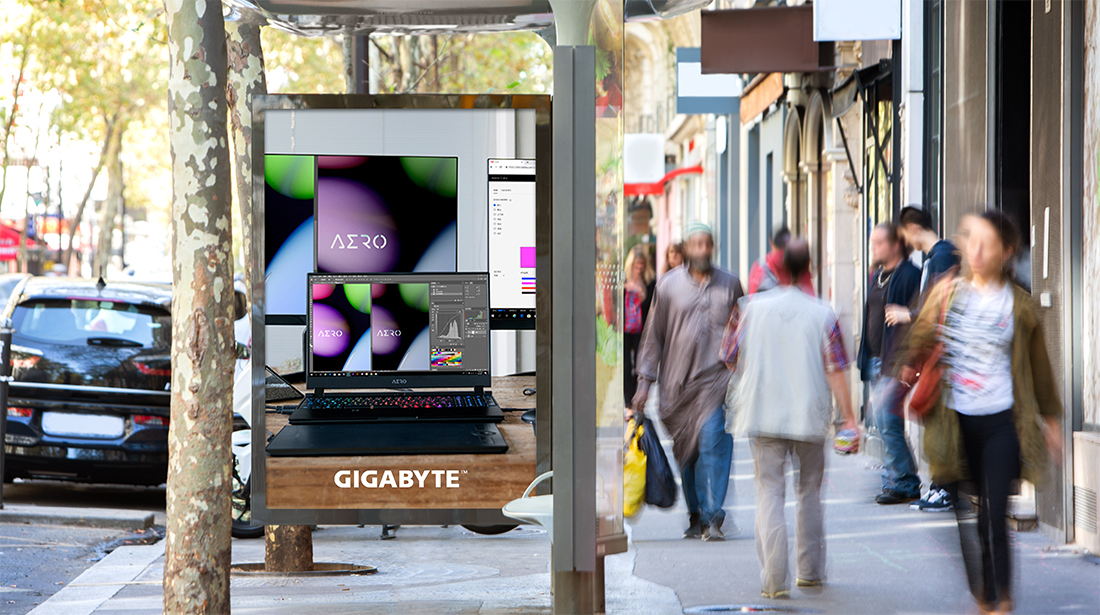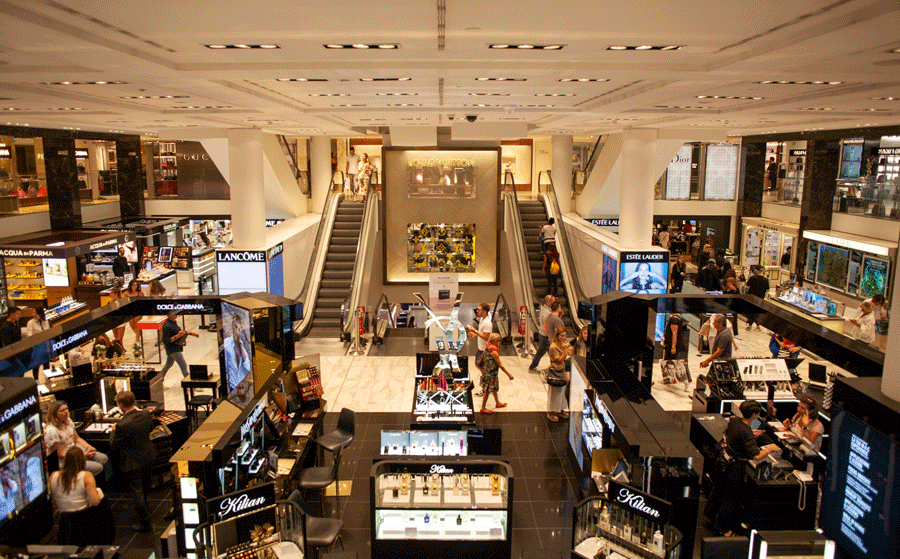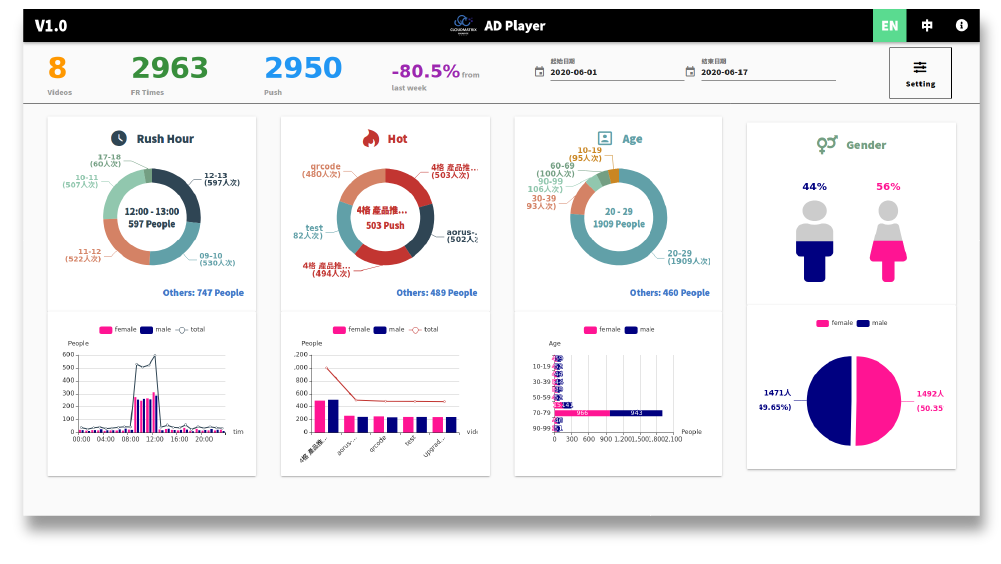Smart Retail Using AI Recognition
Utilization of recognition technology to understand your customers better
Email Sales
To Know Your Customers With Technology
AI recognition technology aims to provide retail business owners with a better understanding of their customers’ interests, by broadcasting targeted advertisements and ultimately improving their retail experience. The system collects analytical data such as customers’ age and gender and reveals their interests or preferences. Through facial recognition, key clients and customers can be identified immediately after they enter the store and be provided with a better experience through personalization of services.
Game-Changing IT System for Retail
Department Stores
Understanding the location of hot zones within the wide space of shopping malls will help promoters relocate important product displays. Feedback gathered from customers’ facial emotions will also help administrators improve the mall environment to ensure everyone has a wonderful shopping experience.

Shopping Mall
Understanding the location of hot zones within in the wide space of shopping malls will help promoters relocate important product displays. Feedback gathered from customers' facial emotions will also help administrators improve the mall environment to ensure everyone has a wonderful shopping experience.

Convenience Stores
Target marketing for special items requires more customer data that indicate their interests. Loyalty club members will also be delighted if they are recognized and treated with courtesy.

How It Works
Quantitative analysis is a critical tool for the success of retailers. Smart Mall Using AI Recognition Technology is designed to provide people counter and hot-zone analysis in shopping malls of various sizes. By leveraging the data offered by Smart Mall Using AI Recognition Technology, shopping malls, department stores, and other business operators can use traffic data to benchmark their performance, quantitative the pan out of marketing campaigns, and spot VIP customers earlier to provide a better shopping experience.

The camera supports Real Time Streaming Protocol (RTSP) and sends the captured dynamic data to the back-end platform. Faces will be captured and recognized, which can assist security guards.
Features and Benefits
Marketing Penetration
Digital signage advertising selected by recognition results to hit your target audience
VIP Targeting
Combining an IP camera with facial recognition technology to identify your most valuable customers
Play the Right Show
Image recognition technology provides the delicate details of your customers, such as their age and gender and plays the right advertisement accordingly.

Customer Segmentation
The region of interest (ROI) area setting assists in more precise and accurate data collection such as the gender and age identification of customers viewing products.

VIP Targeting
Combining an IP camera with facial recognition technology can identify your most valuable customers.

Comprehensive Dashboard
A single dashboard presents real-time, multifaceted information reporting.

Comprehensive Dashboard
Product
1/3
Backstage Software
Comprehensive backstage software for the retail owner. Image recognition algorithm provides greater detail in its analyst report with footfall, heat-map and real reaction while customers viewing the product.
2/3
Front-line Camera
The camera supports RSTP (Real-Time Transfer Protocal) and sends the captured dynamic data to the back-end platform. Actual model may vary due to installation environment
3/3
Rack Server for Database
Various rack servers with a high level of performance, energy efficiency, and overall reliability for the most demanding server applications. Actual model may vary due to installation environment.
Related Technologies
The Internet of Things (IoT) refers to a network of devices connected to the internet that can record or receive data without requiring any human to machine interaction. These devices can be any kind of physical object in daily life, business or industry – for example, the thermostat in your home, a trash can on the roadside, or a piece of equipment on a factory production line.
Big Data describes the large volume of data – both structured, semi-structured and unstructured – that is collected by a business on a daily basis. This data can be generated by both humans (such as a customer's financial transactions), as well as by machines and processes (such as sensor readings and event logs). By its nature, the amount of Big Data is often massive – ranging from terabytes, petabytes and even exabytes of data captured over time.
Machine learning (ML) is the scientific study of algorithms and statistical models that computer systems use to effectively perform a specific task without using explicit instructions, relying on models and inference instead. It is seen as a subset of artificial intelligence.
Bring Your Ideas Faster to Fruition
Email Sales























